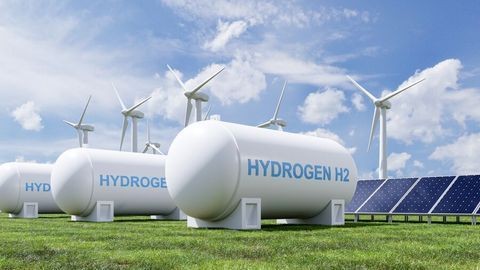One Big Beautiful Bill Act Impact on Employee Benefits
Client Alert | 5 min read | 07.16.25
On July 4, 2025, President Trump signed into law the One Big Beautiful Bill Act (the OBBBA) which amended a number of Internal Revenue Code provisions related to employee benefits and compensation. Although not an exhaustive list, below are the provisions we expect will have the greatest impact on compensation and benefits for mid- and larger sized employers.
- Permanent Elimination of Bicycle Commuting Reimbursement (Section 70112): The OBBBA permanently eliminates the exclusion from an employee’s gross income the $20/month bicycle commuting employer reimbursement. In 2017, the TCJA temporarily suspended the exclusion but the suspension was set to lapse at the end of 2025.
- Permanent Elimination of Moving Expense Deductions (Section 70113): The OBBBA permanently eliminates the moving expense deduction and employer-reimbursed moving expense exclusion, but carves out an exception for intelligence community members similar to the active-duty military exception. In 2017, the TCJA temporarily suspended the deduction and exclusion, but the suspension was set to lapse at the end of 2025.
-
- Crowell Insight: The inclusion of moving expenses as taxable compensation continues to catch employers and employees off guard. Payments are subject to all applicable withholding taxes, often leading employers to either increase the amount payable for moving expenses or to discuss the tax consequences with the employee before the payments are made.
-
- No Tax on Tips (Section 70201): From 2025 through 2028, a deduction is allowed of up to $25,000 for qualified tips for individuals in traditionally and customarily tipped industries. The deduction is phased for joint filers with adjusted-gross-income over $300,000 ($150,000 for non-joint filers). Extends FICA tax tip credit to tips received in connection with food service and beauty and barber services. The deduction is available to taxpayers regardless of whether they elect to itemize their deductions.
- No Tax on Overtime (Section 70202): From 2025 through 2028, a deduction is allowed for qualified overtime compensation (not including qualified tips), excluding highly compensated employees. The deduction is limited to $12,500 of qualified overtime income ($25,000 for joint returns). The deduction is available to taxpayers regardless of whether they elect to itemize their deductions.
-
- Crowell Insight: A few important items for employers to keep in mind. First, the exclusion only applies to federal overtime pay under FLSA standards. Second, employers will need to report the amount of such overtime on the W-2. Withholding tables will be updated.
-
- Trump Accounts (Section 70204): Beginning in 2026, new government-facilitated, IRA-like “Trump accounts” (and a contribution pilot) for children under 18 may be established. Annual contributions are limited to $5,000 (indexed for inflation), earnings grow tax-free, and qualified withdrawals mirror traditional-IRA rules. Accounts established for U.S. citizens born after Dec. 31, 2024, but before Jan. 1, 2029, are credited with an initial government contribution of $1,000. Additionally, the provision allows for employer contributions, tax exemptions for certain contributions, and penalties for improper claims.
- Permanently Establishes Family and Medical Leave Credit (Section 70304): The OBBBA permanently establishes the employer credit under Code section 45A for wages paid to qualifying employees on family and medical leave. Beginning in 2026, employers are allowed to elect a credit amount of either: (i) the percentage of wages paid to qualifying employees on family and medical leave; or (ii) the percentage of premiums paid or incurred for family and medical leave insurance.
- Increased Dependent Care Assistance Exclusion (Section 70404): Beginning in 2026, the dependent care service exclusion increases from $5,000 to $7,500 ($3,750 for married filing separate) for expenses paid or incurred by employer under qualified dependent care assistance program.
-
- Crowell Insight: Employers should review their nondiscrimination testing under Code section 129 to determine whether any employees would not be eligible to take advantage of the increased limit.
-
- Permanent Exclusion for Employer Paid Student Loans (Section 70412): The OBBBA permanently establishes the $5,250 exclusion for employer-provided student loan payments, indexed annually for inflation for taxable years beginning after 2026.
- Expanded Definition of Qualified Higher Education Expenses (Section 70413): Amends the definition of “qualified higher education expense” under Code section 529 to include certain expenses in connection with enrollment in or attendance at an elementary or secondary public, private, or religious school. For tax years beginning after Dec. 31, 2025, the annual aggregate per-beneficiary distribution limitation increases from $10,000 to $20,000. Applies to distributions made after July 4, 2025.
- Inclusion of Postsecondary Credentialing in Education Expenses (Section 70414): The OBBBA further expands the definition of “qualified higher education expense” under Code section 529 to include qualified postsecondary credentialing expenses, and provides definitions related to postsecondary credentialing, with respect to distributions made after July 4, 2025.
- Expanded Definition of Covered Employee for Excess Compensation Tax (Section 70416): The OBBBA expands the definition of “covered employee” under Code section 4960 to include any employee (or former employee) of the applicable tax-exempt organization who was an employee during any taxable year beginning after Dec. 31, 2016. This change applies for tax-years starting after 2025. Before this change, “covered employee” meant any employee (or former employee) who was one of the five highest compensated employees of the organization of the taxable year or was a covered employee of the organization for any preceding taxable year beginning after Dec. 31, 2016.
- Excessive employee remuneration from controlled group members (Section 70603): Beginning in 2026, an entity aggregation rule is applied to the $1 million limit on business expense deductions for employee pay when a publicly held corporation is part of a controlled group. This deduction limitation rule is generally applicable when multiple entities within the controlled group are publicly held.
- Permanent HSA Safe Harbor for Telehealth Services (Section 71306): The OBBBA permanently extends the COVID-era HSA safe harbor, allowing high-deductible health plans to cover telehealth and other remote care services without a deductible and still qualify to contribute to a health savings account (HSA).
- Expanded HSA Eligibility for Direct Primary Care Arrangements (Section 71308): Beginning in 2026, direct primary care service arrangements are not disqualifying coverage for individuals who are eligible to contribute to HSAs. Direct primary care services typically involve a monthly fee for office visits before meeting the high deductible health plan deductible. These fees can also now be covered by HSAs, as long as they do not exceed $150 per month for individuals or $300 per month for families, with adjustments for inflation each year.
Contacts
Insights
Client Alert | 2 min read | 12.19.25
GAO Cautions Agencies—Over-Redact at Your Own Peril
Bid protest practitioners in recent years have witnessed agencies’ increasing efforts to limit the production of documents and information in response to Government Accountability Office (GAO) bid protests—often will little pushback from GAO. This practice has underscored the notable difference in the scope of bid protest records before GAO versus the Court of Federal Claims. However, in Tiger Natural Gas, Inc., B-423744, Dec. 10, 2025, 2025 CPD ¶ __, GAO made clear that there are limits to the scope of redactions, and GAO will sustain a protest where there is insufficient evidence that the agency’s actions were reasonable.
Client Alert | 7 min read | 12.19.25
In Bid to Ban “Woke AI,” White House Imposes Transparency Requirements on Contractors
Client Alert | 5 min read | 12.19.25
Navigating California’s Evolving Microplastics Landscape in 2026
Client Alert | 19 min read | 12.18.25
2025 GAO Bid Protest Annual Report: Where Have All the Protests Gone?





